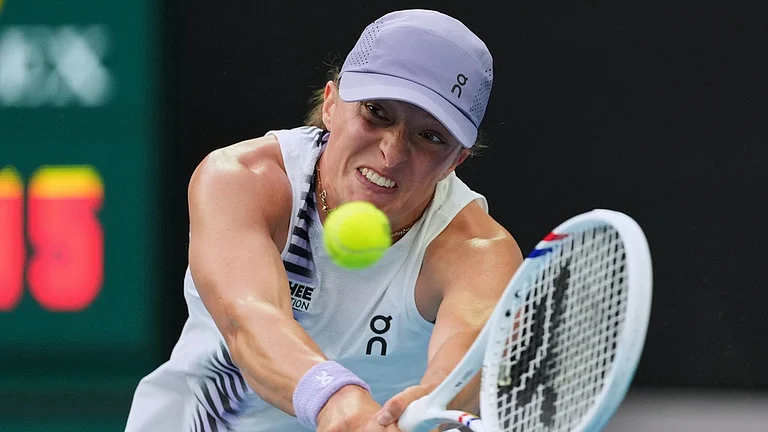‘Conscious Fashion’ seemed to be the catchphrase last week during the Lakme Fashion Week with the who’s who of the fashion world and enthusiasts from across New Delhi driving (and flying) down to Pragati Maidan to strut against “fast fashion” and “fashion pollution.”
By now it is a well-known fact that the fashion industry has a significant impact on the environment. Fast fashion brands selling garments made from polyester and other synthetic fibres are a prime source of microplastic pollution as they rely heavily on petrochemical products driving greenhouse emissions. Fashion moguls like Louis Vuitton, Burberry and Gucci have often faced criticism over their unsustainable choices that propel a consumer practice devoid of environmental sensibilities. Similar criticisms have been showered down on leading Indian designers as well. To combat it, for the last few seasons, fashion designers worldwide have picked up on the ‘eco couture’ and ‘slow fashion’ trends, and ‘organic’ fabrics like cotton, khadi, linen and ‘vegan’ silk have taken the front row at fashion shows.
The same was seen at the 23rd Lakme Fashion Week in partnership with FDCI, as they dedicated an entire day to sustainable fashion and brought in designers whose collections focus on ‘conscious’ clothing with words like ‘handspun’, ‘handwoven’, 'hand-illustrated’ generously thrown into the mix. But beyond the textiles, embroideries and handloom techniques (the artisanship certainly deserves more recognition), how else are designers defining sustainability? Lest we forget, the entire concept of fashion week itself is not an ideal medium for talking about sustainability.
Sustainable or Not?
The Oxford Dictionary defines ‘sustainability’ as “the ability to continue or be continued for a long time”, which goes against the fundamental idea of fashion shows. If the purpose is to last longer, then why do we need a fashion week every six months to sell us changing trends? According to researchers, a 15-minute runway presentation at the four major fashion events in Paris, London, Milan and New York can take up to six months to create, with hundreds of trials and errors, and usually ends with a dumpster of plastic bottles, press notes, invitations, flowers and decor.
At the Lakme Fashion Week this time, a lot of talk was about making it a “carbon neutral” event, yet the disposable plastic water bottles readily available at the canteen made it a little difficult to believe it. On the runway, the luxurious drapes and jackets, skirts and pants made of fashion-favourite fabrics like khadi and linen, as well as ‘vegan’ alternatives for polyester and nylon, like Ecovero and Econyl, got a few heads turned. Varun Bahl’s festive edit collection on Day 1 also brought back Reliance’s next-gen fabric R|Elan which is made by 100% repurposing of PET bottles and has been a hit the past two seasons. Yet, the use of plastic accessories and embellishments like zippers, buttons and sequins throughout the shows made these ‘conscious’ choices questionable.
On Day 2, themed Sustainable Fashion Day, Designer Kaveri’s ‘The Romance of the Rose’ Autumn-Winter ‘23 collection in fine linens and silk organza with beautiful roses appliques in pastel shades gave an easy-A to comfort. Showstopper and influencer Sakshi Sindhwani expressed that her “curves were loving” the fabric, and we are here for body positivity. However, on the sustainability report, the designer falls back ever-so-slightly. The designer said she uses fabric scraps to make the appliques and hair accessories. And while linen, one of the fabrics she uses, is among the most sustainable natural fibres, the use of silk could make many animal rights activists angry, as it has in the past, due to its unkind process of boiling silkworms alive.

Designer Anjali Patel Mehta showcased her luxury resort wear brand Verandah’s Goan-Portuguese-inspired collection with hand-illustrated prints, fine embroideries on Bemberg’s ‘vegan’ silk. This silk is made of cupro fibre, a regenerated cellulose fibre made from linter – tiny fibres left out during cotton yarn production that otherwise ends up in waste. While cupro is an eco-friendly alternative to silk as it is biodegradable and helps combat waste, its chemical-heavy production process is known to involve large quantities of copper, ammonia and caustic soda. The brand, however, promises of small-batch production and zero-waste manufacturing even if some of the sequin-heavy clothing pieces tell a different story.
Fighting ‘Greenwashing’

With ‘slow fashion’ and ‘sustainability’ becoming a USP for major brands, greenwashing often becomes the biggest challenge for those that are truly trying to do better for the environment, tells Karishma Shahani Khan whose brand Ka-Sha, while trying to be as sustainable as possible, focuses on a unique approach of individuality. On every piece of clothing purchased, the label mentions the name of the creator (the tailor), the material used, the hours taken to make the product and the technique used.
“Sustainability has become an overused and loosely used term,” Karishma tells Outlook. “There are many ways to be sustainable but it needs to stop being the USP and become a value. And that’s the biggest challenge.”
A welcome change was the 11.11/eleven eleven show, which not only brought a wholesome atmosphere with classical musicians performing a live concert but also gave recognition to each player of the collection, many of whom – tailors, stylists, designers, actors, a sustainability advocate and co-founder Shani Himanshu himself – walked the ramp. Their ‘Handspun’ Spring Summer ‘24 collection was an artisanal time capsule of handspun textiles and techniques in carefully sourced naturally dyed colours. For the show, the brand partnered with UNESCO as it placed ‘madurkathi’ reed mats all over the runway to honour the rural craftsmanship of West Bengal. Shani Himanshu, who co-founded 11.11/eleven eleven with Mia Morikawa 15 years ago, says that it has been their core principle to acknowledge the strength of the indigenous practices of India.

The brand’s sustainability focuses on the economic aspect, giving fair recognition to the artisans from rural parts of the country. Himanshu questions the need to bring these artisans to ‘urban’ spaces for their earnings when they have cleaner air and a better lifestyle where they are. “The challenge is to honour the indigenous techniques that these artisans have been practising for generations and bring them to a larger audience without disrupting their livelihoods,” he says. The brand believes in educating its customers about the entire process of making a garment from the kind of yarn used, to where and how it is sourced, the techniques used and all artisans involved. One of the achievements of 11.11/eleven eleven, he says, has been being able to use natural dyes in all their products for which they had to educate the artisans who were not aware of the effects of the chemicals used in dyeing.
The designer also admits that while it has been their target to be a fully sustainable brand, they have not yet been able to achieve the target of using organic cotton in 100% of their production. The prefix of ‘organic’ on any and every cotton product just because it is found in nature does not make sense, Himanshu says, until it is grown without pesticides and chemical fertilisers. “As of now, close to 60% of the cotton that we use is organic. Sourcing organically grown cotton which gives us a finer yarn of the 200 count is difficult. We have to keep in mind how the cotton is being grown and learn and practice better methods,” he notes.
There is a fine line between sustainable fashion and ‘greenwashing’, the latter being a marketing ploy to capitalise on the trend of environmentally sound products that fashion brands like Zara and H&M have been infamous for. In 2021, Gucci-owner Kering, H&M and Inditex, Zara's parent company, signed the UN’s Fashion Industry Charter for Climate Action. But much remains unclear about their products as the labels barely give any details to the consumers as to how their garments are ‘conscious’ or sustainable.
When British fashion designer Stella McCartney addressed the COP26 Climate Change Conference at Glasglow two years ago, she spoke about the necessity of adopting vegan methods. “The future of fashion and our planet is vegan,” she said and added, “If we do not act decisively, we know the consequences.” McCartney is a co-founder at Bolt Threads, which uses mycelium, a root-like structure of a fungus, to make ‘Mylo’ – a vegan alternative to animal leather – using technology powered by renewable energy.
While many Indian designers have made it a mission to be eco-conscious, sustainable fashion remains a gimmick unless it becomes a part of the hygiene adopted by designers and brands in an end-to-end manner instead of making token gestures and ‘woke’ advertisements. Transparency is at the core of sustainability as without creating awareness among the consumers about the length of the processes, how can we close the ‘conscious’ loop? Fair-trade practices and maintaining ethical standards are on the other side of the loop, without which the fast fashion trends which fail to give any recognition to the actual makers of the garments will continue to dominate the fashion industry.


























